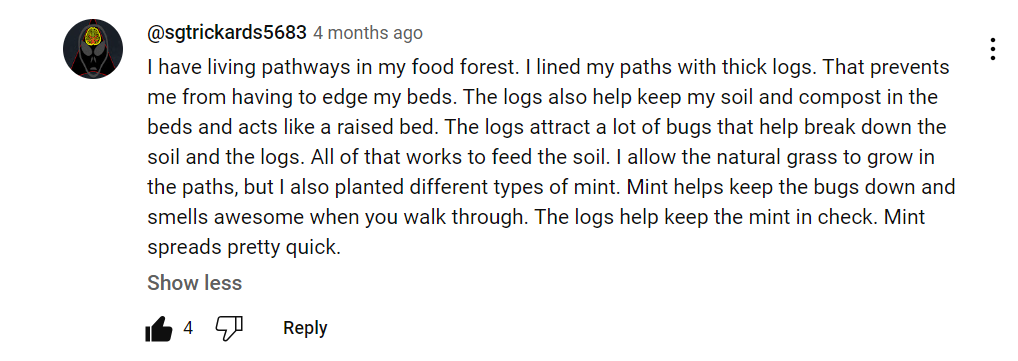Will Living Pathways Destroy Your Garden?

Living pathways are a great addition to any farm or garden. They improve soil health and provide a habitat for beneficial insects.
But will they destroy your garden? The Answer: Maybe.
Choosing the Right Plants for your space is important, as well as how you plan to manage them. Thankful there are many options here for varying levels of a lazy gardener to an intense garden nerd (Not exclusive terms).
A simple way to create living pathways is planting cover crops that also serve as ground covers. Let's explore some of the best cover crops to plant for living pathways.
- Red/White Clover: Clover is a popular cover crop for living pathways because of its ability to fix nitrogen in the soil. It also grows quick and can provide good ground cover in a short amount of time. Clover is also a great choice for attracting beneficial insects like bees and butterflies.
- Annual Ryegrass: Annual ryegrass is another popular cover crop for living pathways because it grows quick. It also helps to suppress weeds, control erosion, and store excess water. Annual ryegrass also provides habitat for ladybugs.
- Pinto Peanut: A great pick if you live in a warmer climate. Like clover, peanuts are nitrogen-fixing legumes. The Pinto in particular stays small so it won't overtake your growing spaces.
- Weeds: Suprise! After Clover, this is the best option for living pathways. Save yourself the work, trial, and error of planting for your conditions, and let it go wild. When the weeds flower mow them down! Keep an eye out for toxic invasives, and remove thorny plants if you plan to be barefoot.
- Winter Rye: If you have issues with harmful weeds, planting Rye may be your solution! Rye is allelopathic, meaning that it releases chemicals that will inhibit the growth or germination of other plants. This is especially useful in perennial areas like orchards and vineyards.
Planting living pathways is a great addition to regenerative spaces. By planting cover crops like clover, annual ryegrass, peanuts, and winter rye you can increase the beauty and function of your soil. Anything left unmanaged has the potential to overtake managed space. The general rule however is that Nature fills bare soil, so keeping areas planted with healthy root systems will have a compounding positive impact on your garden!
Dive Deeper with this video from Farmer Jesse at No-Till Growers:
While we can work hard to manage living pathways or grass, check out this comment on a low-maintenance solution to living pathways:

We encourage you to experiment with Living Pathways this year. Dedicate a small section of your garden to try out some of these plants. Try mixing many of the plants together to increase the benefits.